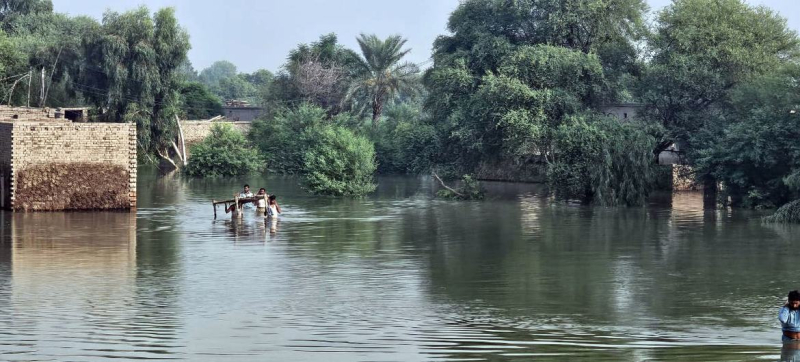- Former AL MP BM Mozammel Haque arrested in Dhaka |
- Prof Yunus expresses solidarity with Shahidul Alam and Gaza |
- Tk 38-cr Rangpur women’s sports complex now grazing ground! |
- 70 Dead in Gaza as Trump Urges Israel to Halt Strikes |
- A welcome rare momentum to reach a permanent ceasefire in Gaza |
Pakistan Monsoon Floods Cut Off Villages, Kill Hundreds

Severe monsoon rains across Pakistan have affected more than one million people.
Relentless monsoon rains continue to wreak havoc across Pakistan, cutting off villages, destroying homes, and leaving families struggling to access food, clean water, and medical care.
Aid agencies are working tirelessly to reach the hardest-hit areas.
The National Disaster Management Authority (NDMA) said nearly 800 people have died since late June – almost three times the toll during the same period last year.
Khyber Pakhtunkhwa province has been hardest hit, where flash floods and landslides swept away homes and schools in mountainous districts, isolating entire communities.
Punjab – the country’s most populous province – is also on high alert, as rising waters on the Sutlej, Ravi, and Chenab rivers threaten downstream areas. Authorities fear that near-full reservoirs and upstream water levels could trigger further flooding in the coming days.
In Gilgit-Baltistan, glacier lake outburst floods (GLOFs) have added another layer of devastation, destroying homes, water systems, and power infrastructure in remote valleys.
These floods occur when heavy rains or rising temperatures cause glacial lakes to burst through natural barriers, suddenly releasing vast amounts of water and debris. With little warning, they are often catastrophic.
Experts warn that climate change is accelerating glacial melt in the Himalaya–Hindu Kush region, increasing the number and size of unstable lakes and heightening disaster risks.
The humanitarian toll is widespread, with more than one million people affected nationwide.
Many families are sheltering with host communities rather than in relief camps, citing concerns over livestock and schooling. Health workers are reporting surges in malaria, fever, and skin infections, further straining fragile health services.
Despite major efforts led by federal and provincial authorities, supported by the UN and humanitarian partners, critical gaps remain.
The most acute needs are in remote mountain areas, where landslides block access and residents face worsening disease, hunger, and water shortages, according to the UN aid coordination office (OCHA).
The UN Children’s Fund (UNICEF) said children face heightened risks, with schools damaged, safe water scarce, and protection needs rising. The agency has dispatched hygiene kits and helped restore water supplies.
The World Health Organization (WHO) is leading disease surveillance and control operations in an effort to contain outbreaks.

